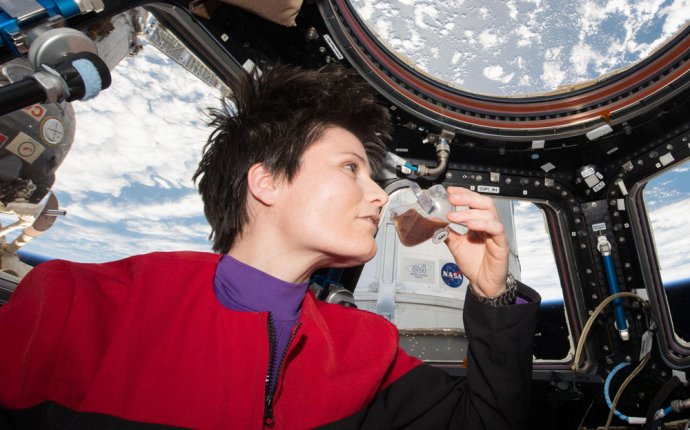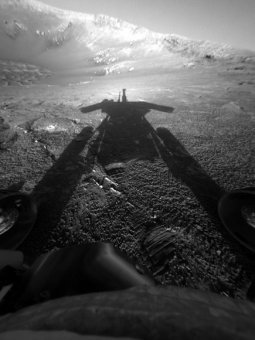
Articles on space exploration
 NASA's current mission to send an astronaut to Mars is driven by development of the Orion crew exploration vehicle. The capsule spacecraft is being designed to take humans back to the moon by 2020. In later years, by rendezvous with Mars-bound vehicles assembled in orbit, it may take the first humans to the Red Planet.
NASA's current mission to send an astronaut to Mars is driven by development of the Orion crew exploration vehicle. The capsule spacecraft is being designed to take humans back to the moon by 2020. In later years, by rendezvous with Mars-bound vehicles assembled in orbit, it may take the first humans to the Red Planet.
These future possibilities are exciting, but unmanned spacecraft have already greatly enhanced our knowledge of Mars.
Dozens of spacecraft have been sent to Mars, but only about one of every three missions has been a success. This sobering statistic underscores just how difficult it remains to send a craft to Mars and see it arrive in proper working order to transmit data back to Earth.
The first Mars missions were called flybys and involved getting a spacecraft close to the planet so that it could take images in passing.
NASA's Mariner spacecraft were small robotic craft designed to explore the neighboring planets of Venus, Mars, and Mercury. Mariner 4 passed Mars in July 1965 and captured close-up images of this foreign world—the first Mars images ever returned to Earth.
First Lander on Mars
In 1971 the Soviet space program scored a major success by putting the first spacecraft into Martian orbit and even touching a lander vehicle down on its surface. The Mars 3 orbiter returned some eight months of data that revealed much about the planet's topography, atmosphere, weather, and geology. Though the mission's lander was able to touch down on the surface, it returned data for only about 20 seconds before it went dark.
Later, orbiting spacecraft such as like NASA's Mariner 9 returned far more detailed data on the planet's atmosphere, mapped its surface, revealed Martian topography, and captured many more images of this strange and distant world.
These missions solved some mysteries, such as dispelling the long-held myth of Martian canals that evidenced an ancient civilization. They also raised many new questions, such as the nature of ancient riverbeds that point to the presence of ancient liquid water on the planet.
Viking 1 and 2, a pair of orbiter/lander missions, reached Mars in 1976. These long-lived spacecraft continued to return data as late as 1982. They captured photos of the Martian surface that astounded the public and excited scientists. The mission's landers also conducted biological experiments on Martian soil that were designed to uncover signs of life in space—but their results were inconclusive, though tantalizing.
The Mars Pathfinder mission, launched in 1996, proved that it was possible to land a free-moving rover vehicle that could travel around the planet's surface. Its rover, Sojourner, returned an unexpected wealth of scientific data, including images, weather observations, and chemical soil analyses.
Ongoing Missions
NASA's Mars Global Surveyor has orbited the planet since March 1999 on a mission to map and study the planet's entire surface. The long-term mission has produced particular insights into the dynamic planet's changing seasons and shifting weather, including its infamous dust storms.
Perhaps the most famous of all Martian missions is that of the Mars exploration rovers Spirit and Opportunity. These two rovers reached opposite sides of Mars in January 2004 and have proceeded to explore the planet far more extensively than previous missions.
The rovers have covered several miles and returned more than 100, 000 high-resolution images. Probing soil and rocks, they have also used their fully equipped lab modules to conduct robotic field geology tests on the Martian surface and even below it.
The rovers continue to operate, displaying incredible staying power that far exceeds their original operational window of 90 days.
Many future Mars missions are already in development and will take place long before any human visits the planet. Scientists hope that robotic craft can delve far beneath the Martian surface to return data, and possible samples, of the planet's geology. Such missions could even find signs of the water, and possible life, that may lie hidden beneath the planet's forbidding exterior.











